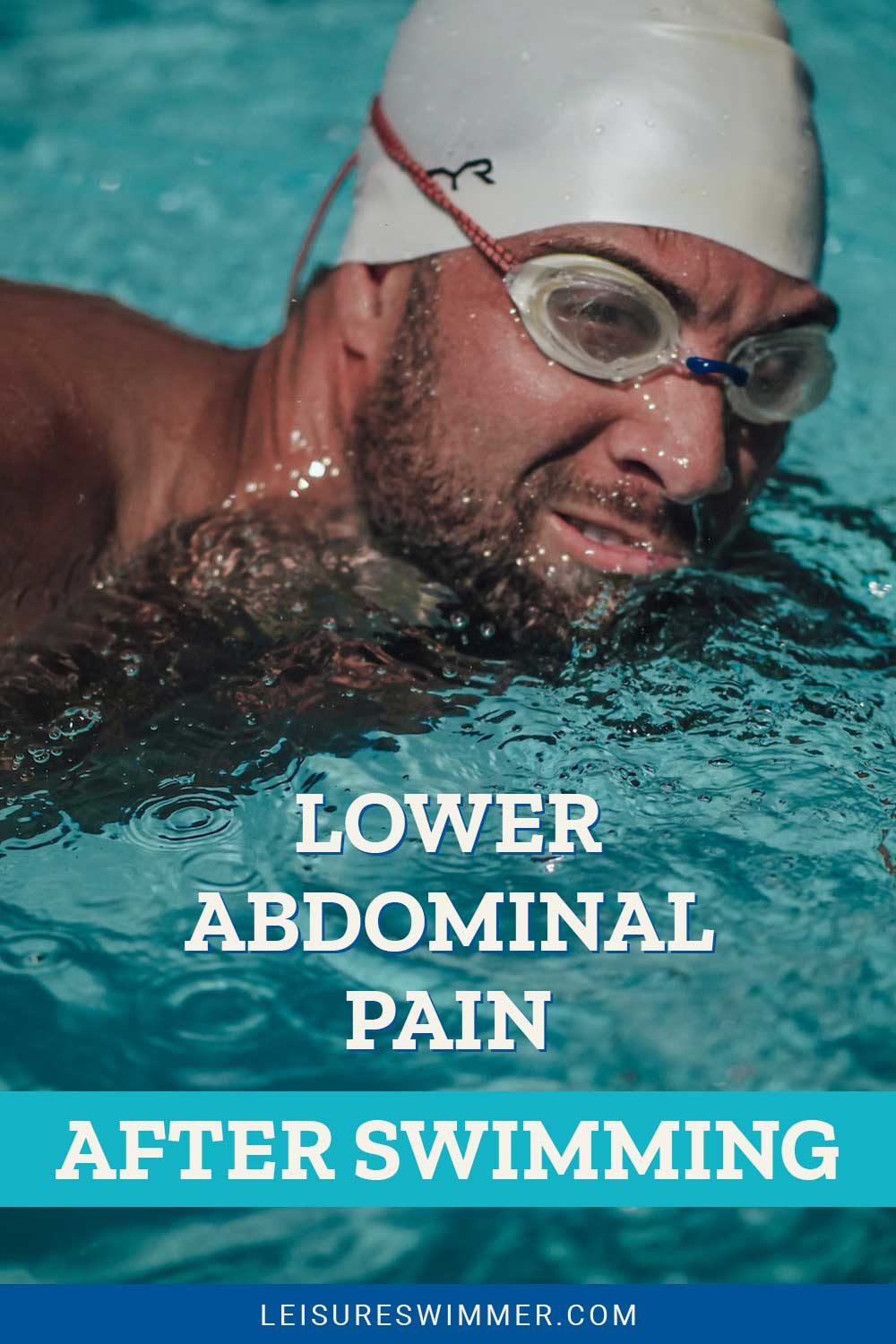Lower Abdominal Pain After Swimming
We may earn commissions for purchases made through links on our site. Learn more on our about us page.
As a low-impact form of exercise, you might think that swimming has little to no risk for injuries, but this isn’t always the case. Improper form or technique, overly ambitious swimming sessions, and more, can lead to painful injuries and conditions.
Pain in your lower abdomen, around the stomach area, is not uncommon. Many of the symptoms are linked to poor swimming technique but are not usually chronic conditions.
Read on to learn more about why your lower abdomen might be hurting, how you can help prevent lower abdominal pain and the answers to other burning questions.

How Can You Stop Lower Abdominal Pain After Swimming?
Depending on the kind of lower abdominal pain you experience after swimming, there are a variety of methods you can try to stop the pain.
However, many of the reasons why you might be experiencing lower abdominal pain, especially in the stomach, can be traced back to your diet. It’s important to eat a healthy and balanced diet when swimming to lose weight or build some muscle.
Avoid greasy, processed foods and snacks that contain lots of artificial sweeteners. These can all promote gas buildup in the stomach, which is exacerbated and painful after a swim. You should also take care not to eat a large meal before you go swimming.

Can You Prevent Lower Abdominal Pain Caused by Swimming?
If food doesn’t seem to be the issue and you only experience lower abdominal pain soon after a swim session, then your swimming technique is likely to blame. There are three main reasons why the act of swimming might be causing lower abdominal pain:
- Ingesting pool water – chemicals in pool water and pathogens like bacteria in other water sources can cause some intense abdominal discomfort and pain.
- Breathing technique – gulping air as you swim can be a form of aerophagia, leading to a buildup of gas in the stomach and abdomen, which causes painful bloating.
- Abdominal strain – swimming uses many muscles when done properly, and the muscles of the abdomen are key to maintaining a streamlined position. If you haven’t worked on these muscles before, they can be tired and sore after swimming.
Should You Be Worried if You Have Abdominal Pain After Swimming?
Abdominal pain after swimming is not necessarily a cause for concern. This is mostly because the symptoms are often minor and go away on their own as you recover from a vigorous swim session.
If you are concerned about abdominal pain after swimming, you may consider taking a short break from swimming so that your body can rest.
If the abdominal pain is particularly severe, gets worse instead of better over time, or is accompanied by other alarming symptoms like vomiting or blood in the stool, you should see a healthcare professional as soon as possible.
For How Long is the Pain Normal?
Depending on the type of abdominal pain and how you treat yourself during this problem, you might experience abdominal pain for a day to a couple of days, a week, or even several months.
Acute abdominal pain is the most likely type of pain you will experience after swimming. However, when you take care of yourself and the nature of the pain isn’t serious, the pain should go away more or less by itself within a day or two.
More chronic abdominal pain can last for several months or more. In cases like these, swimming may not be the cause, but it can make the pain worse than it normally feels, such that you are more aware of it.
Should You Stop Swimming if You Keep Getting Abdominal Pain?
If you are a beginner swimmer or think that the pain stems from your swimming technique, give your body some time to adjust to this exercise before jumping to conclusions and quitting swimming altogether.
Once you know for certain that your abdominal muscles are well-trained, you aren’t ingesting copious amounts of air or pool water, and you are still experiencing abdominal pain after each swim, then it may be time to consider quitting.
You may want to seek out medical advice beforehand to see if there is anything clinically that you can do to prevent abdominal pain during or after a swim.
Final Thoughts on Lower Abdominal Pain After Swimming
A lot of things can cause lower abdominal pain. Swimming is not necessarily a direct link to your pain but can often make the conditions for the abdomen worse by promoting gas production in the stomach and straining muscles in the area as you swim.
You can avoid having to deal with abdominal pain after a good swim by training yourself, improving your technique, and eating better. Another great way to reduce abdominal pressure after a swim, especially for women, is to wear loose-fitting clothes afterward.


